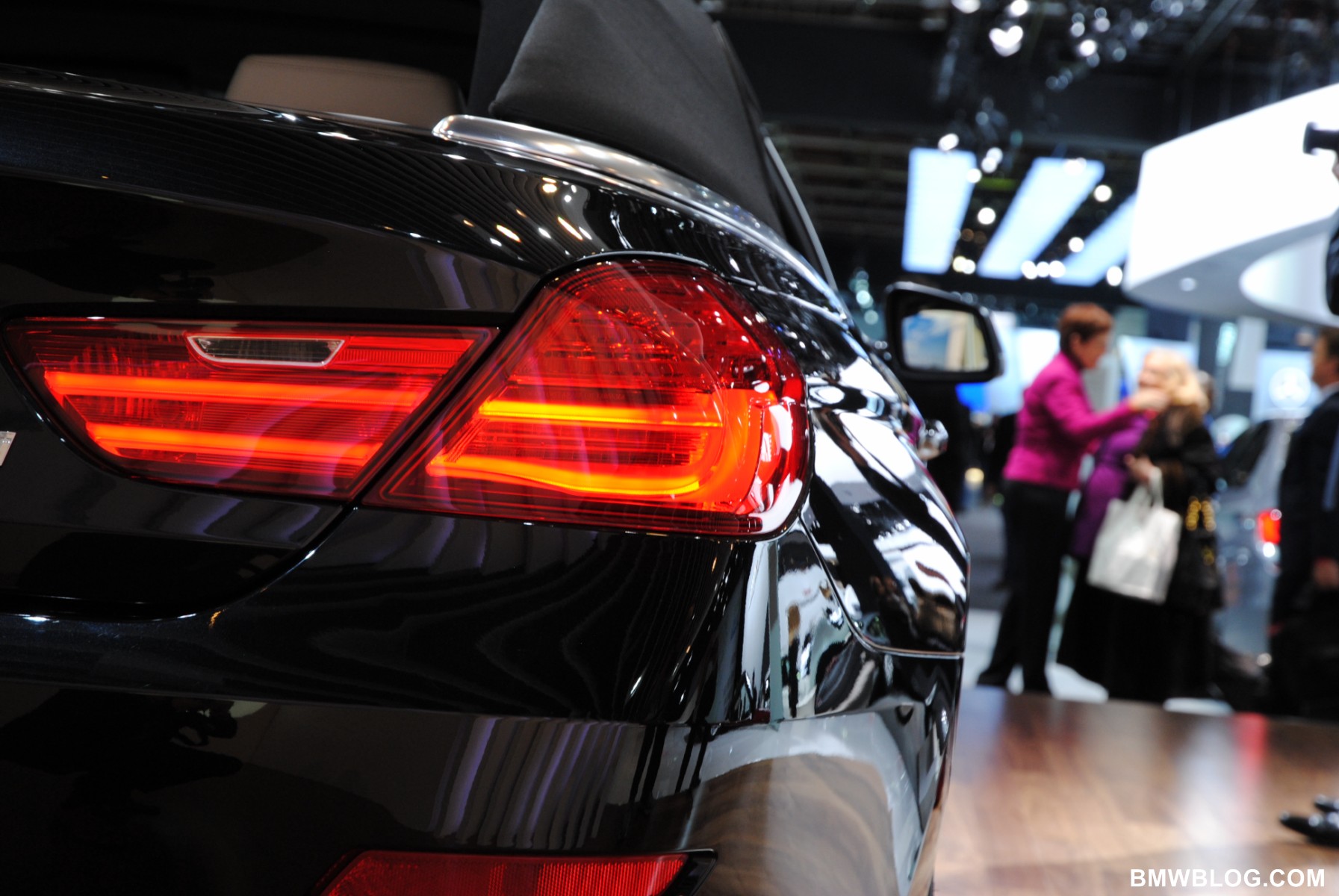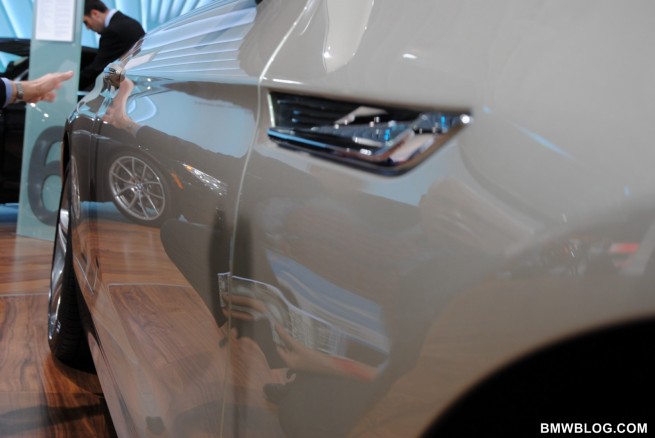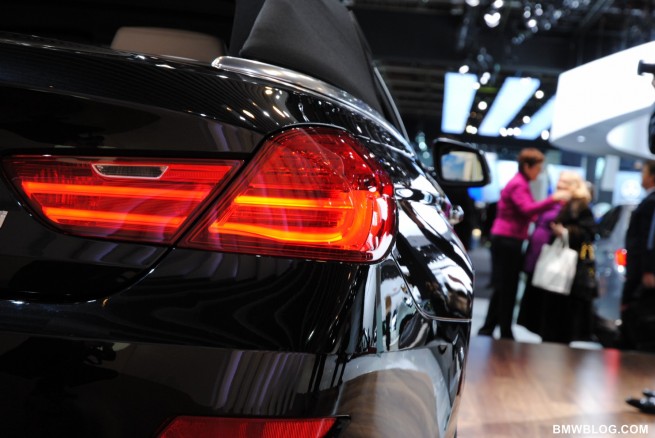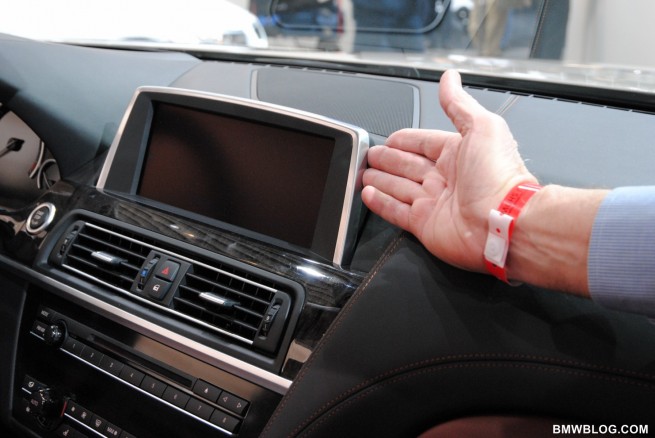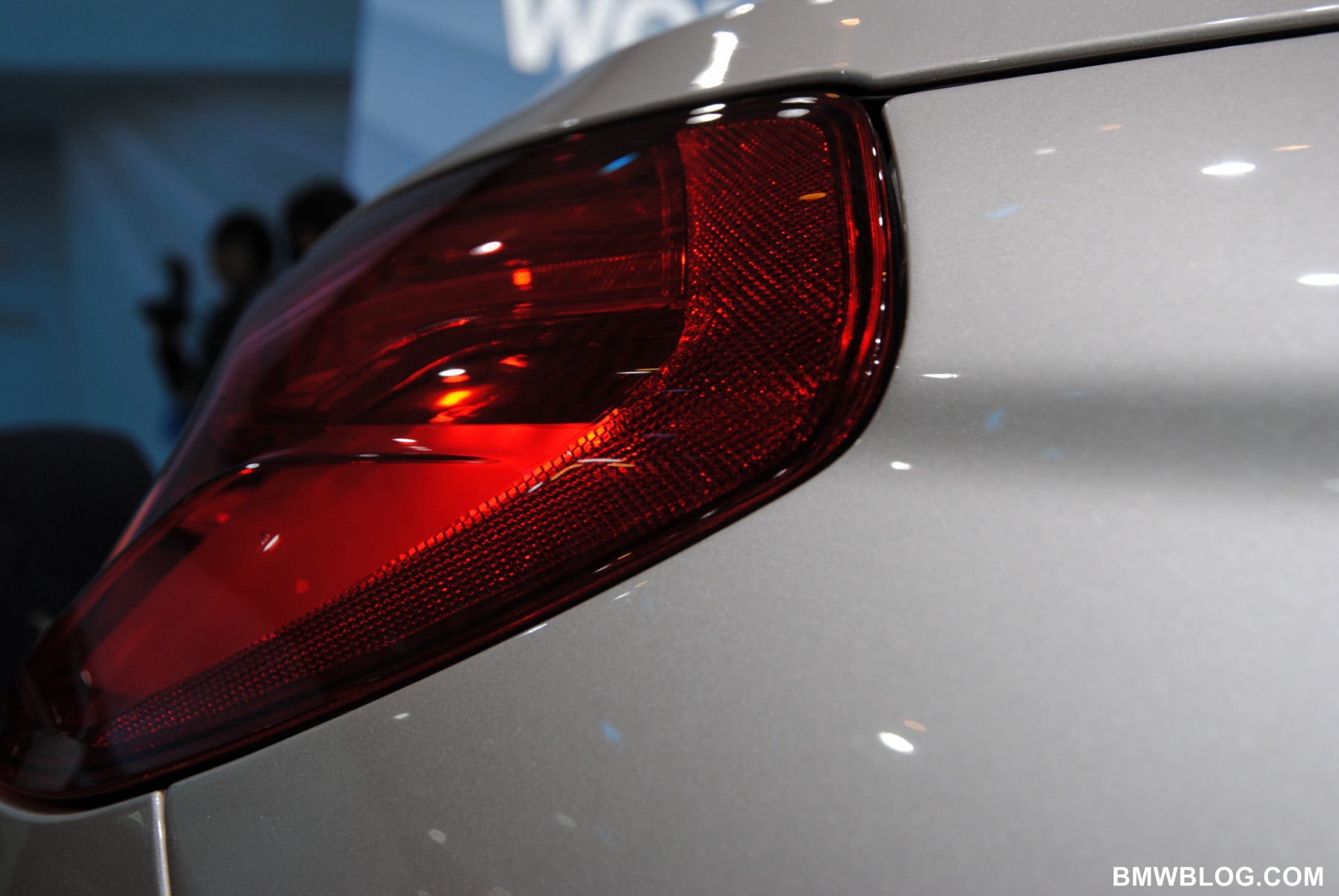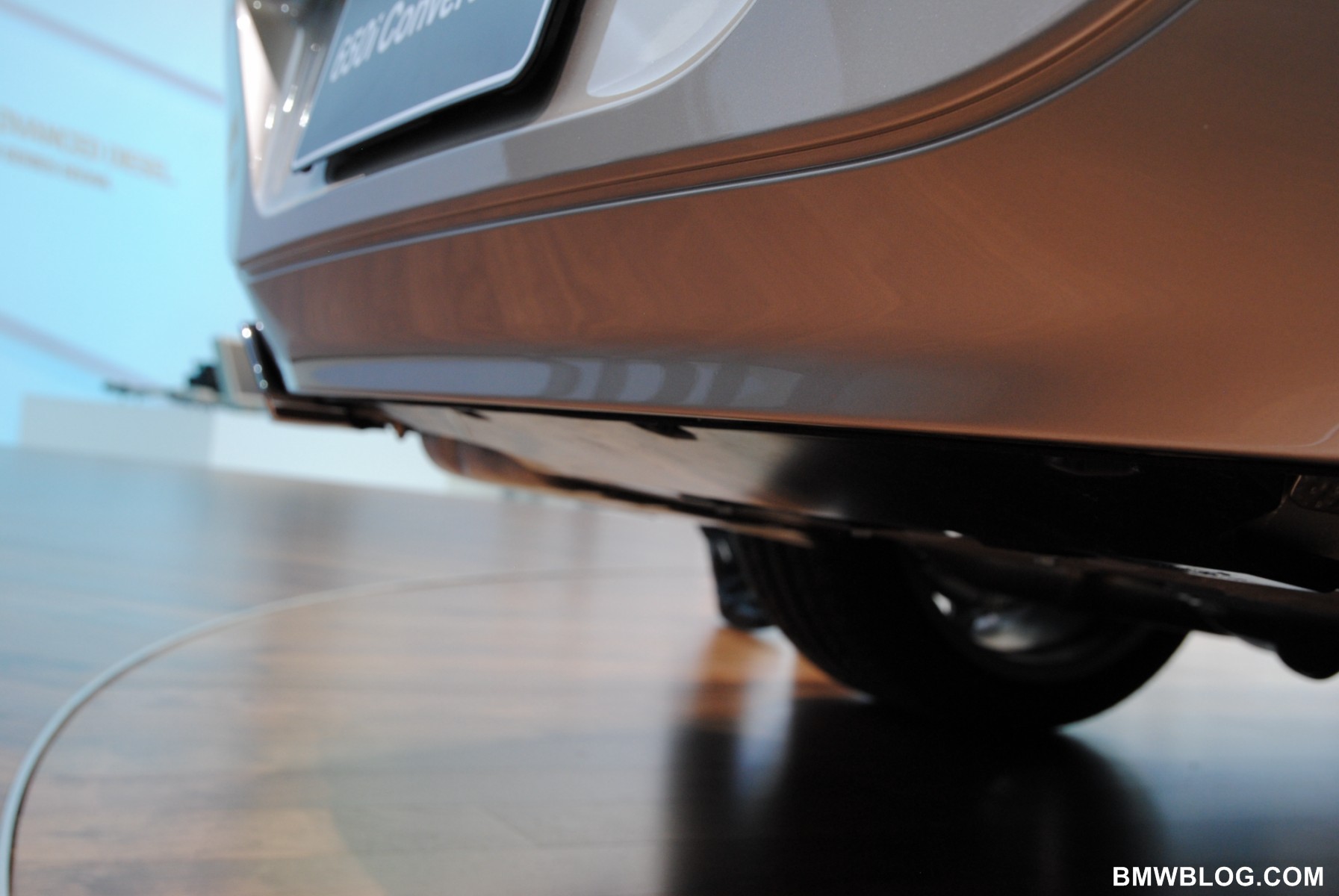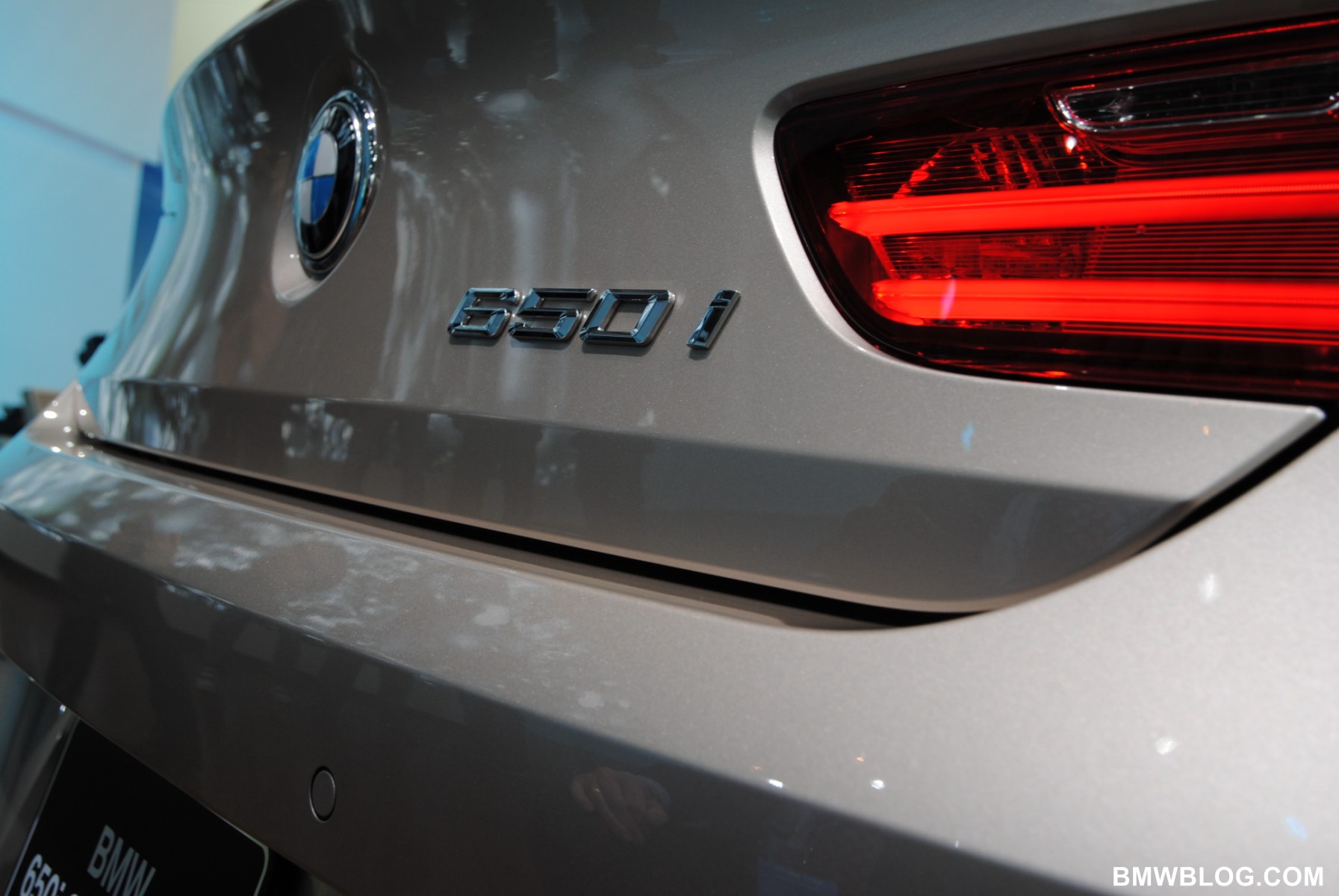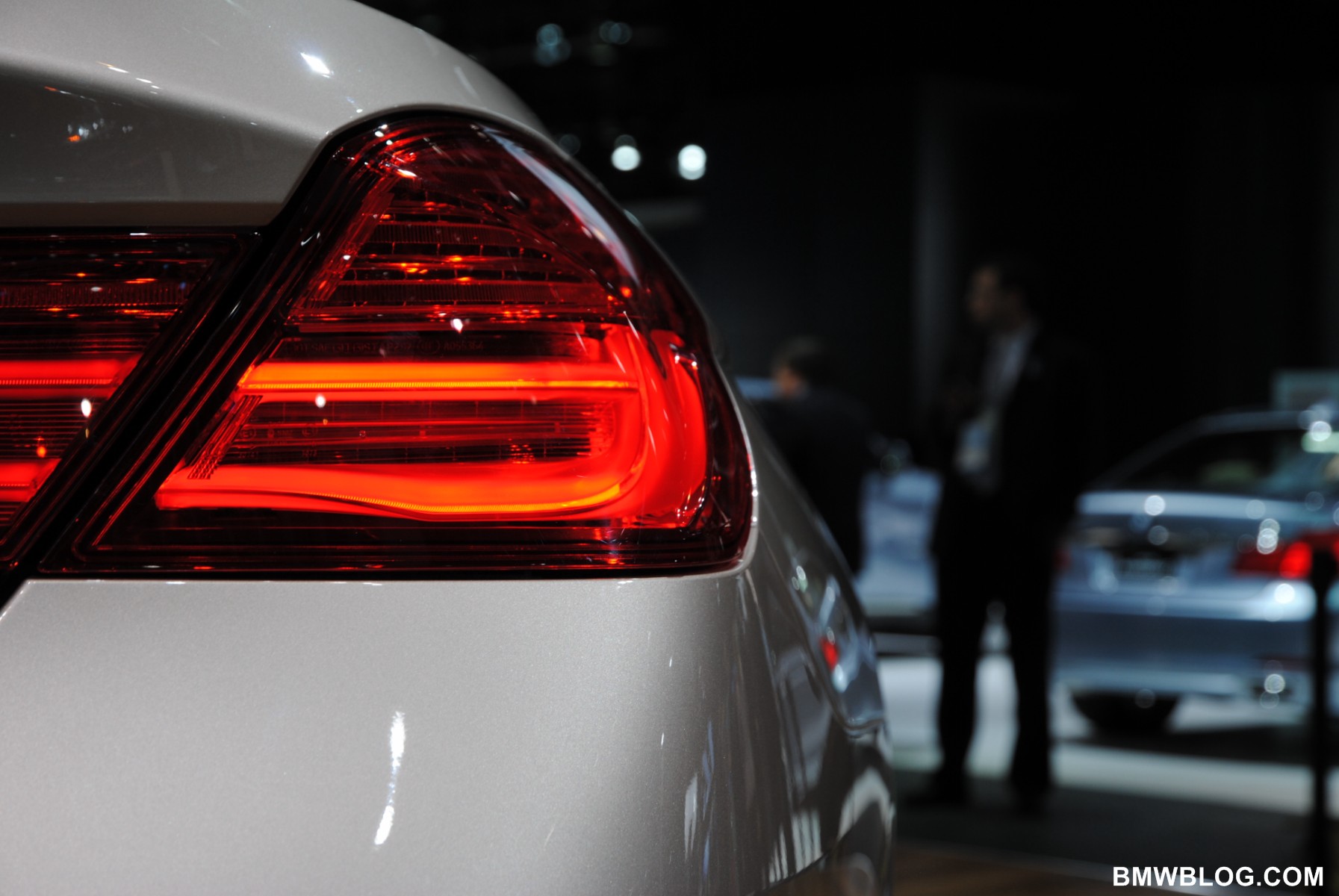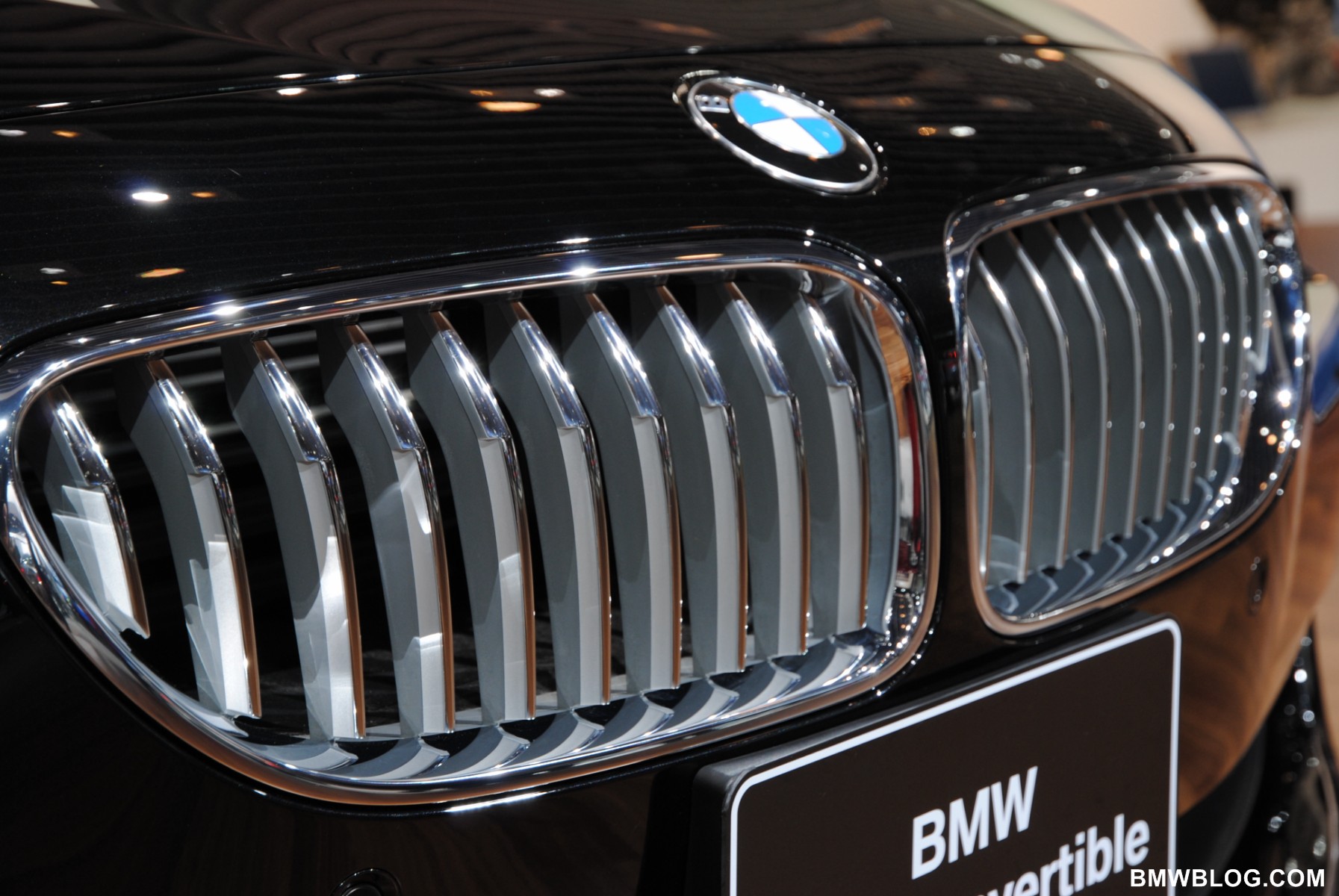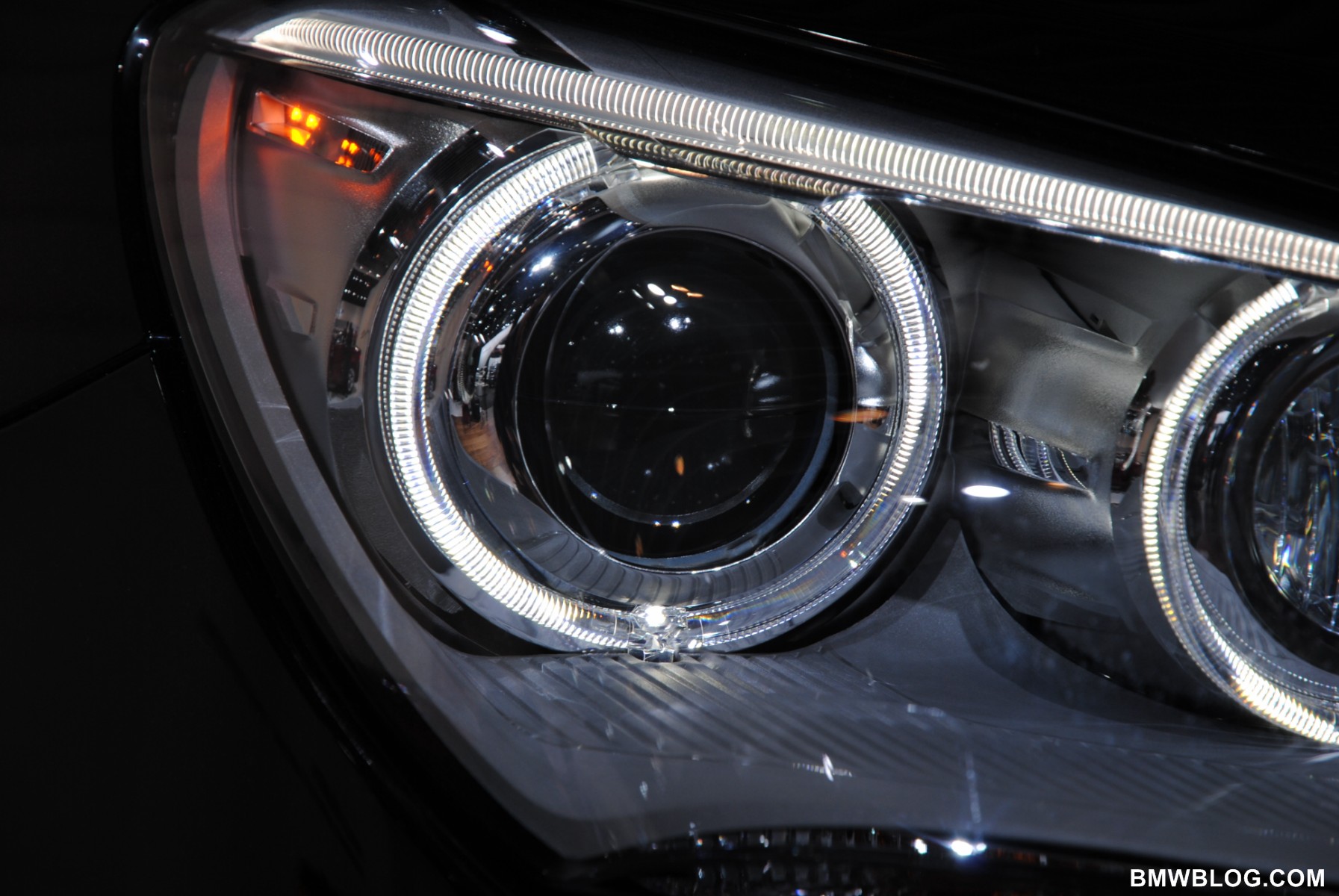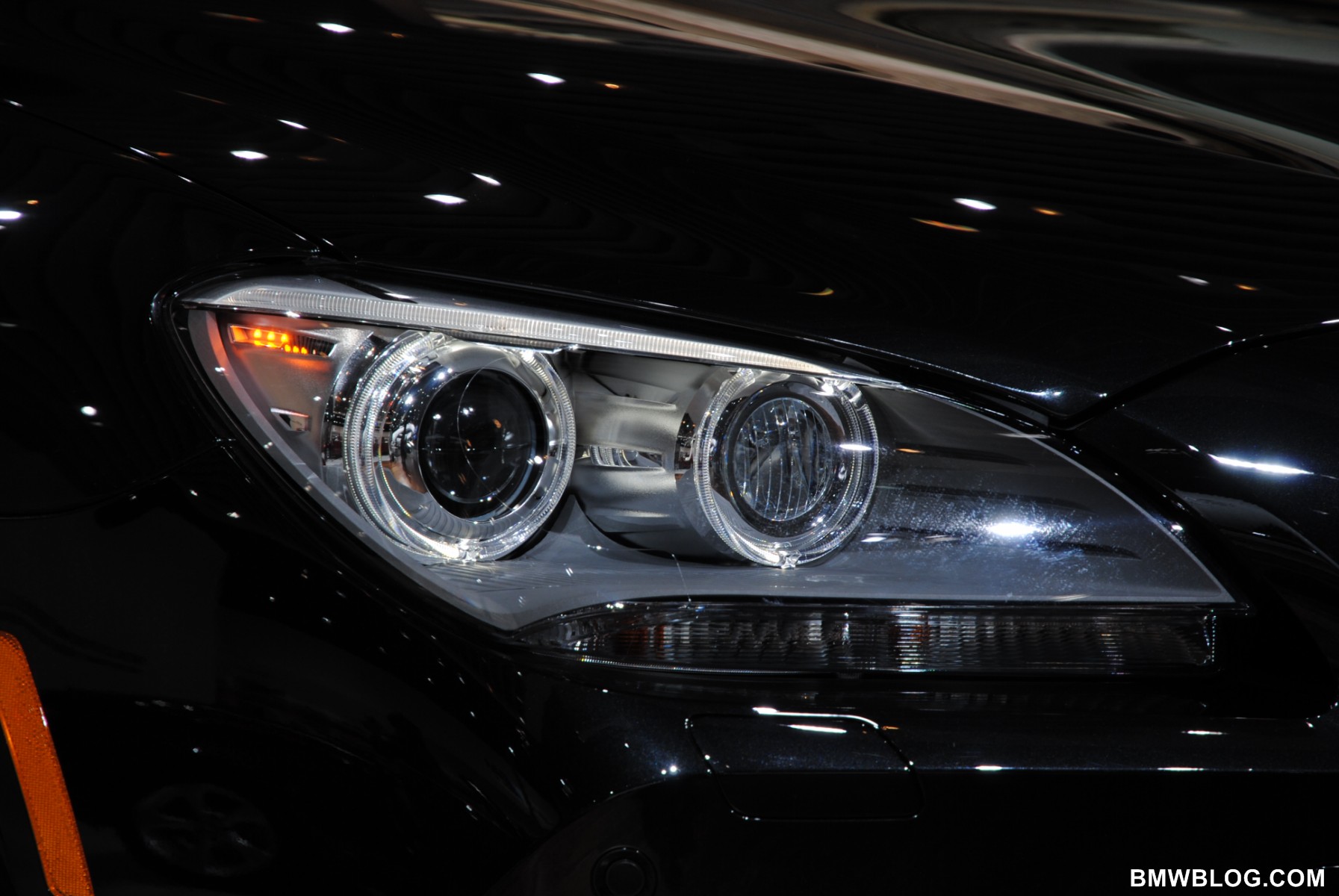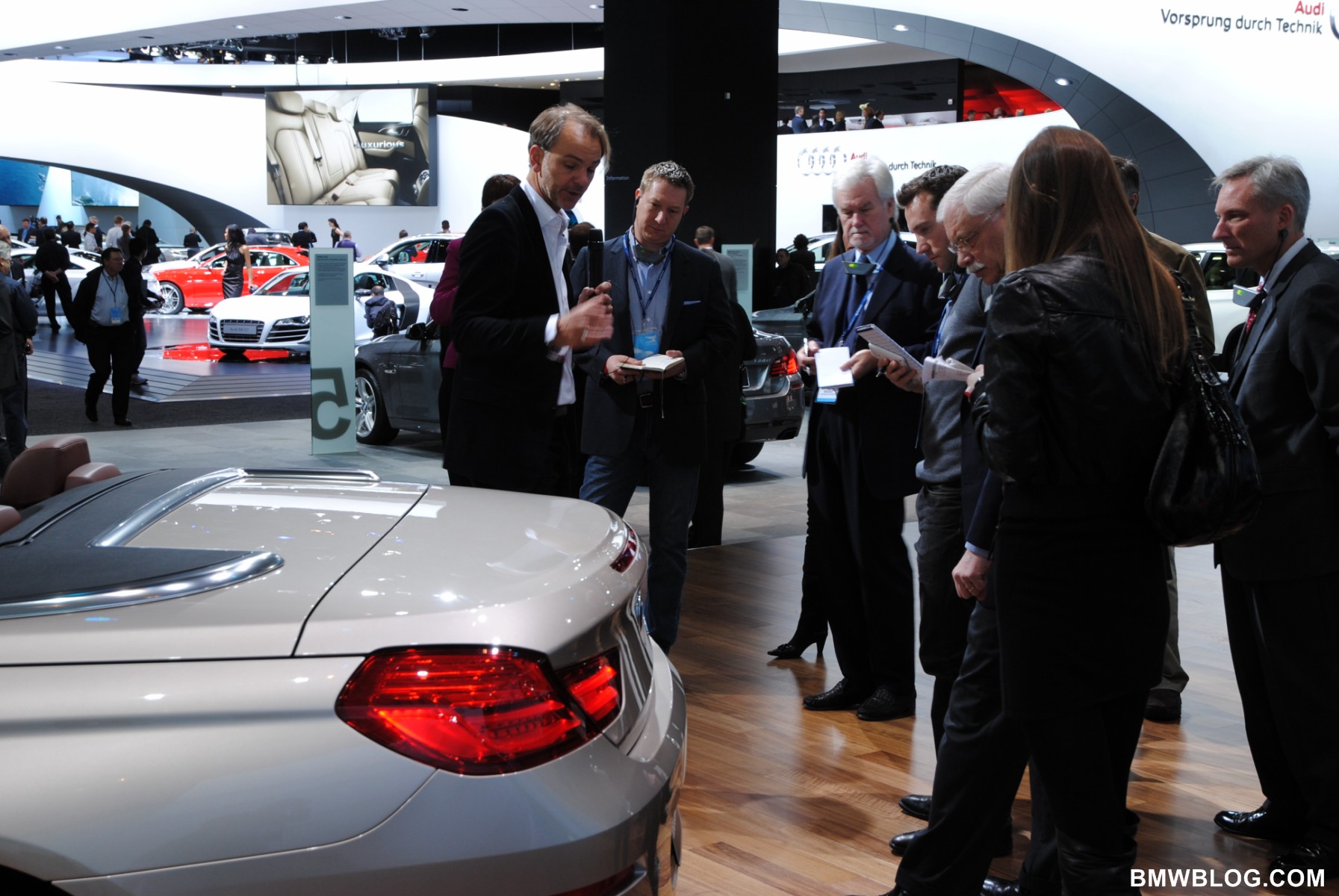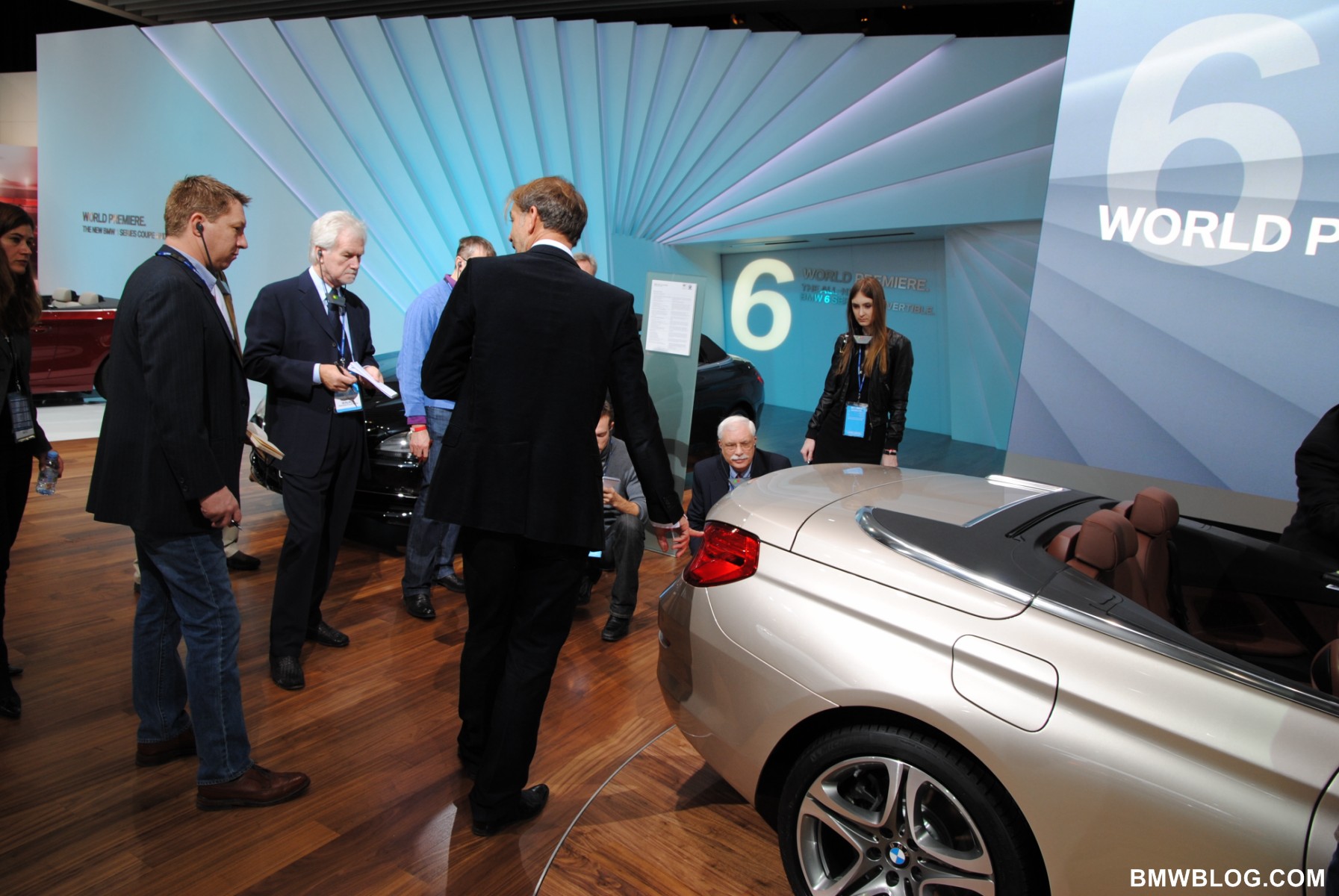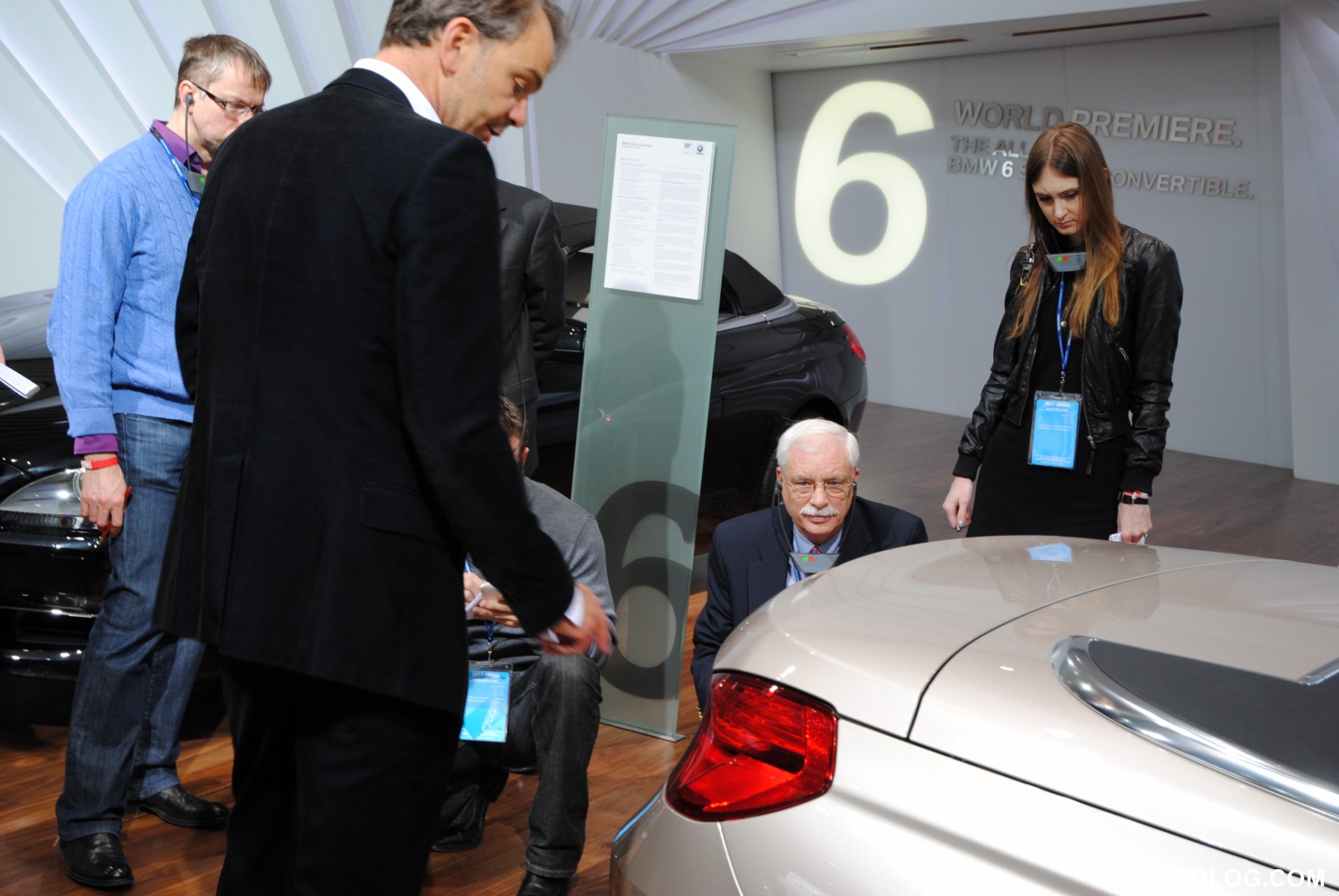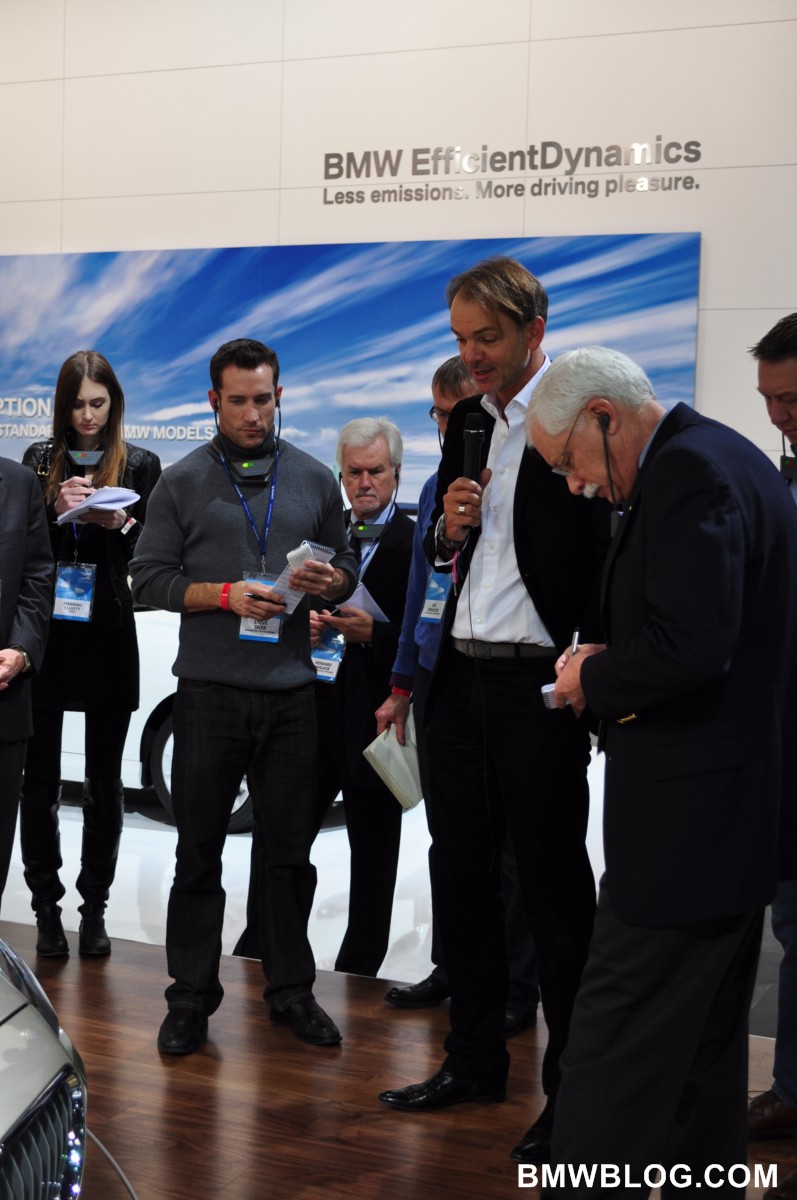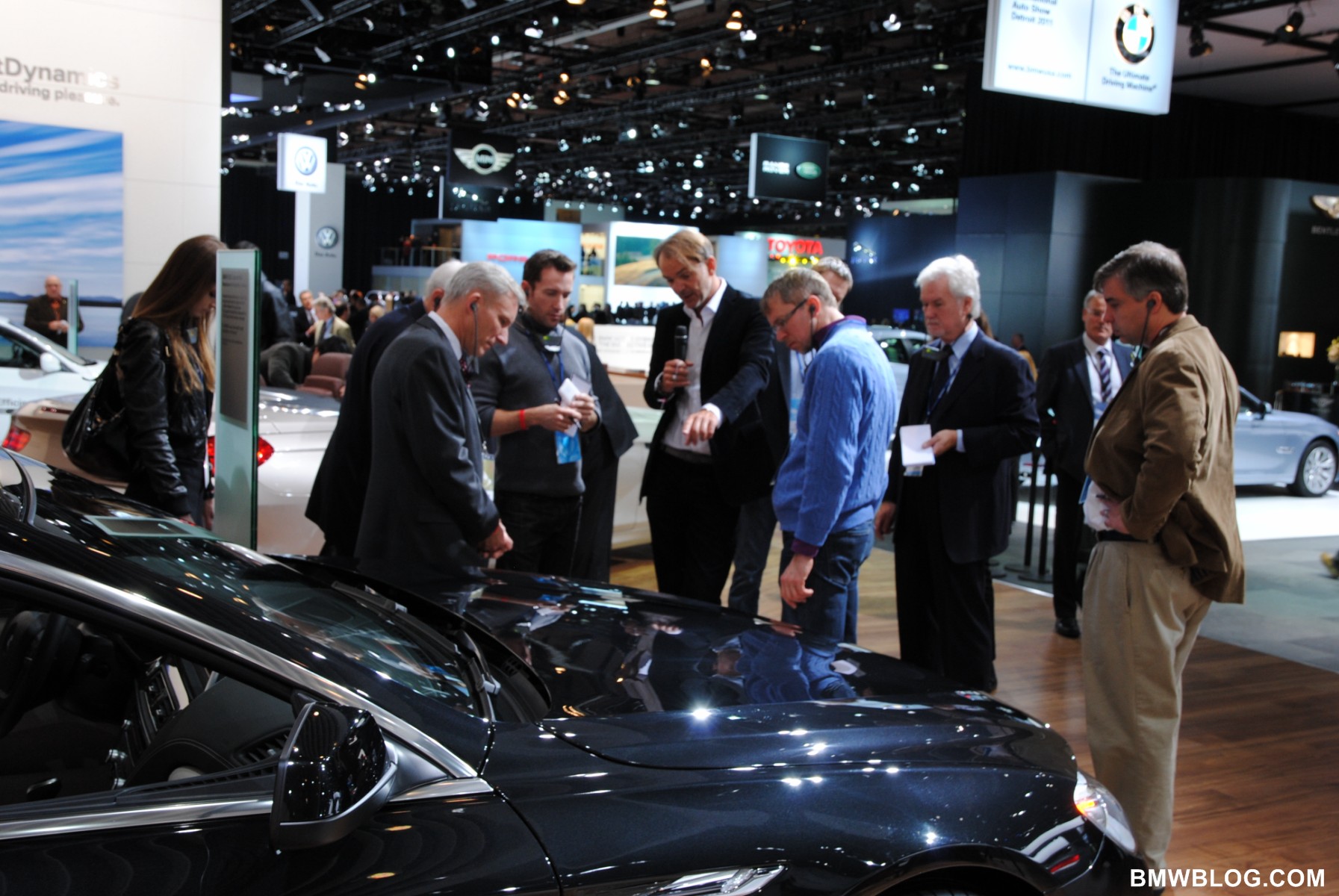Detroit – BMW held a design workshop for the 6 Series convertible on Tuesday morning. The process started with an explanation of why a soft top was selected over a metal folding top. In talking to Adrian van Hooydonk in the customer lounge prior to the event, he explained that the customers of the 6er have multiple cars, basically one for every occasion, that the need for a hard roof was not necessary.
The fabric top was made esthetically possible thanks to the ‘fins’, the buttress supports on either side of the roof, that allowed it to be a ‘fast’ shape. The soft top then can follow the same shape as the coupe. The top is constructed of multiple layers of fabric and is said to be quite quiet in operation. There is also a classical elegance to the top being constructed of fabric.
The 6er has a purposeful resemblance to the 7 and 5 Series. Adrian van Hooydonk explained that the car has been lengthened and widen from the previous 6. This has allowed for a more optimal rear seat back angle and sightly more commodious accommodations.
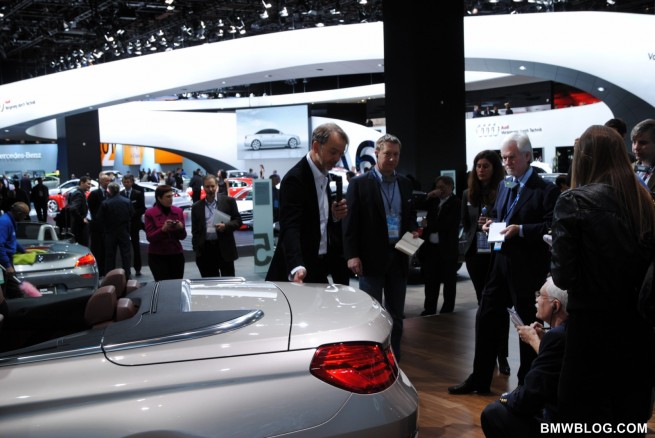 There are two lines that sweep from the front of the car back. One at the shoulder line and one that runs from the chrome jewelry in the fender back through the door handles and onto the rear fenders (and is visually reminiscent of the line on the 7 Series).
There are two lines that sweep from the front of the car back. One at the shoulder line and one that runs from the chrome jewelry in the fender back through the door handles and onto the rear fenders (and is visually reminiscent of the line on the 7 Series).
As we reported yesterday (and Adrian von Hooydonk reiterated in the workshop), the front fenders are injection molded plastic, the door skins are aluminium, and the rear fenders are steel. Three disparate materials that have different responses to the process of shaping them. Adrian von Hooydonk emphasized that the designers worked with those properties and designed and exploited the capabilities of the material to the benefit the design.
The projected customer for the 6er is looking for sporty elegance and BMW considers the 6er to be the ‘top of the range’. In explaining how elegance was projected in the design with the minimal amount of lines, Adrian von Hooydonk said, “. . . lines are graphics, sculpture uses fewer lines, everything else is light and shadow” And the surfaces of the 6er are definitely sculpted. The shadow of the line that runs through the door handles is manipulated from front to rear. It casts a deeper shadow along the doors and then tapers to a much smaller shadow over the rear fender. This imparts a feeling of speed to the car.
Then there are a lot of smaller details that grab attention upon closer inspection. The headlamp clusters incorporate a series of three lines that run from top to bottom of the lens shrouds and onto the inner surface nearest the kidney grilles. Further LED illumination of both the tail lamps and ‘angel eyes’ is incorporated. The kidney grilles are lower and wider on the 6er and the vertical grille slats break backwards two thirds of the way up in the grille opening. It’s another detail that provides a hint of motion.
Speaking of lighting, Adrian van Hooydonk pointed out that BMW prefers to use the LED as a source of illumination for a strip of material that can carry the light wherever possible rather than as a point source. They are less garish when used in that manner.
In the interior LED illumination is continued in a small strip near the top of the door trim. Using the LED as a source of light for a strip softens the impact and can be considered ‘mood’ lighting. The interior lines are designed to flow from the dash through the door panels and into the side panels at the rear of the interior. The notion is to impart a sense of motion in the design. And the separation of the driver’s space from the front passenger’s space is accomplished with a difficult to build but sensuous curving surface that tumbles from the top of the dash and down across the passenger’s edge of the center stack. This is a great design detail. And Adrian van Hooydonk pointed out that the nav screen was designed to emulate the look of a flat screen TV. But the beauty of this is that the top surface of the dash, behind the nav screen, can be positioned lower making the glazed area larger in front of the driver’s eyes.
All in all the new 6er is a styling home run. It represents what BMW can do with sculpting surfaces that bring visual life to the engineering depth of the vehicle itself. BMW’s engineering prowess is well served and much more marketable when clothed in designs as sporting and elegant as the new 6 Series.


